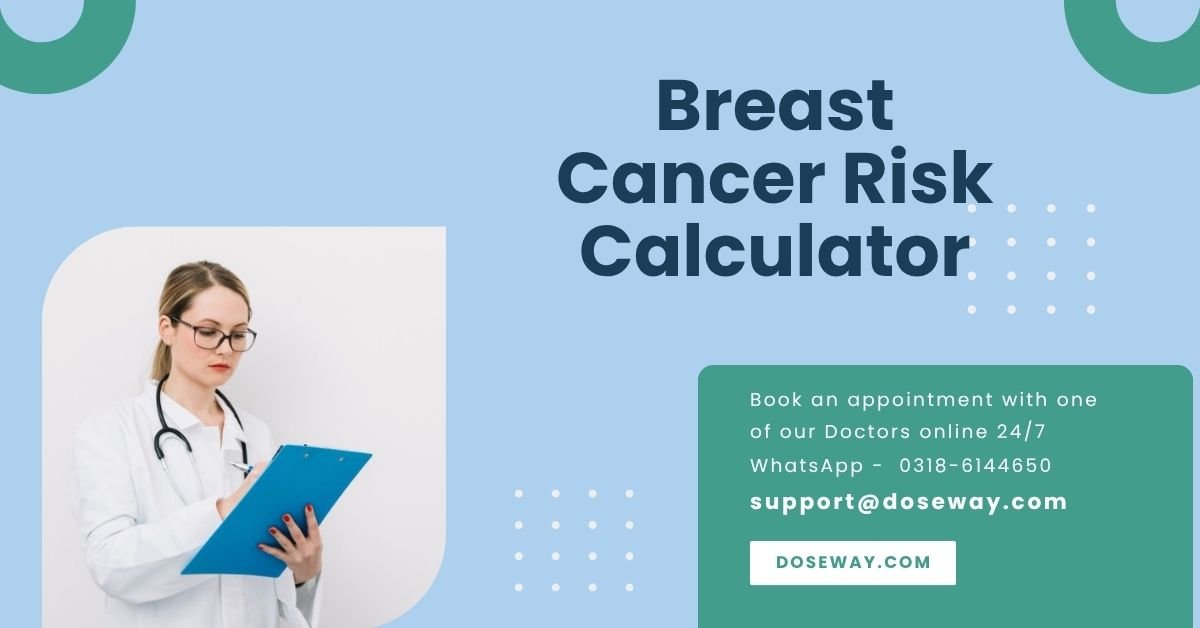Breast Cancer Risk Assessment (Gail Model)
Risk Assessment
Try More Free Tools:
- Try Our Cancer Risk Calculator
- Try Our Multiple Myeloma Cancer Treatment (Multiple Myeloma Medication)
Breast Cancer Risk Calculator

Table Of Contents
Breast Cancer Risk Calculator
Breast cancer remains one of the most prevalent cancers globally, affecting 1 in 8 women during their lifetime. Early risk assessment is critical for proactive health management. Our Free Breast Cancer Risk Calculator combines medical research and clinical parameters to provide personalized insights. Below, we break down how this tool works, the key terms involved, and how to interpret your results.
What Is Breast Cancer Risk?
Breast cancer risk refers to the likelihood of developing malignant tumors in breast tissue over a specific period. Genetic, hormonal, and lifestyle factors influence this risk.
Key Terms to Understand:
- BRCA1/BRCA2 Genes: Genetic mutations linked to hereditary breast cancer.
- Menarche: Age at first menstruation (early onset increases risk).
- BMI (Body Mass Index): Higher BMI correlates with elevated estrogen levels, a risk factor.
- First-Degree Relative: Immediate family members (mother, sister) with breast cancer.
- Hormone Replacement Therapy (HRT): Long-term use may increase risk.
How the Breast Cancer Risk Calculator Works
Our tool uses clinically validated parameters to estimate your 5-year and lifetime risk. Here’s what it evaluates:
1. Demographic Factors
- Age: The risk increases with age, peaking at 50–70 years.
- Gender: Women have a higher risk, but men can develop breast cancer too.
2. Genetic & Family History
- Family history of breast/ovarian cancer.
- Known BRCA1/BRCA2 mutations.
3. Reproductive Health
- Age at first menstruation (≤12 years = higher risk).
- Age at first childbirth (≥30 years = higher risk).
4. Lifestyle Metrics
- BMI: Obesity increases estrogen production.
- Alcohol consumption and physical activity levels.
Interpreting Your Results
The calculator generates a color-coded risk score:
| Risk Level | Score Range | Recommendations |
|---|---|---|
| Low | 0–10 | Regular screenings, healthy lifestyle |
| Moderate | 11–20 | Genetic counseling, increased screenings |
| High | 21+ | Specialist consultation, preventive measures |
Key Metrics in Your Report:
- Lifetime Risk Percentage: Compared to average population risk (12.5%).
- Risk Contributors: Visual breakdown of factors (e.g., genetics = 30%, lifestyle = 50%).
Why Early Risk Assessment Matters
- Early Detection: 90% survival rate when caught at Stage I.
- Preventive Measures:
- Prophylactic surgeries for high-risk patients.
- Lifestyle modifications (diet, exercise).
- Tailored Screening: MRI/mammogram frequency based on risk level.
Take Control of Your Health
Use our Free Breast Cancer Risk Calculator to:
- Identify modifiable risk factors.
- Schedule targeted screenings.
- Create a prevention plan with your doctor.
FAQs
How accurate is this calculator?
It’s based on the Gail Model and Tyrer-Cuzick Algorithm, validated in clinical studies.
Can men use this tool?
Yes, though male breast cancer accounts for only 1% of cases.
Does a high score mean I’ll get cancer?
No—it highlights elevated risk, not a diagnosis.

 Cart is empty
Cart is empty
Add a Comment